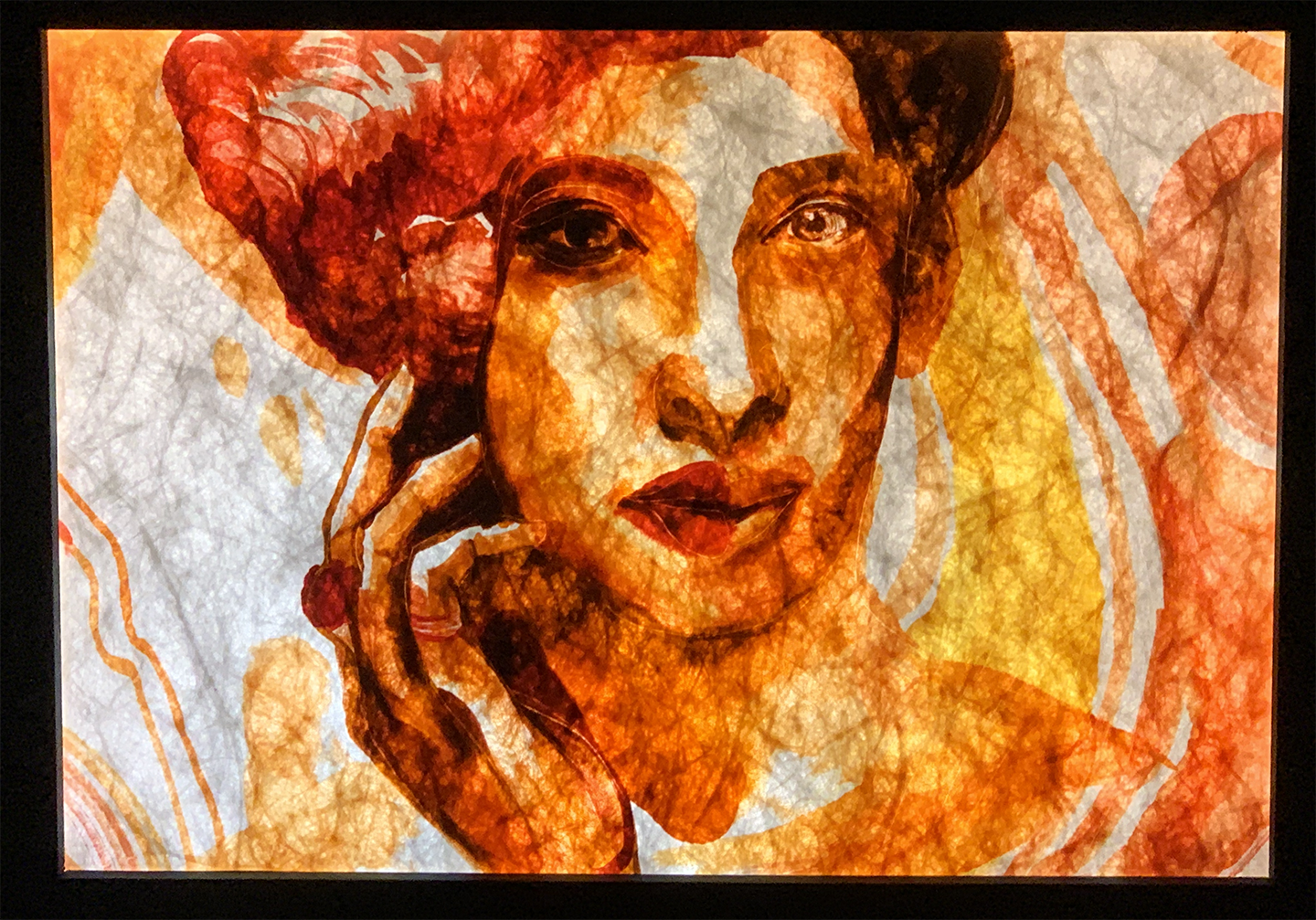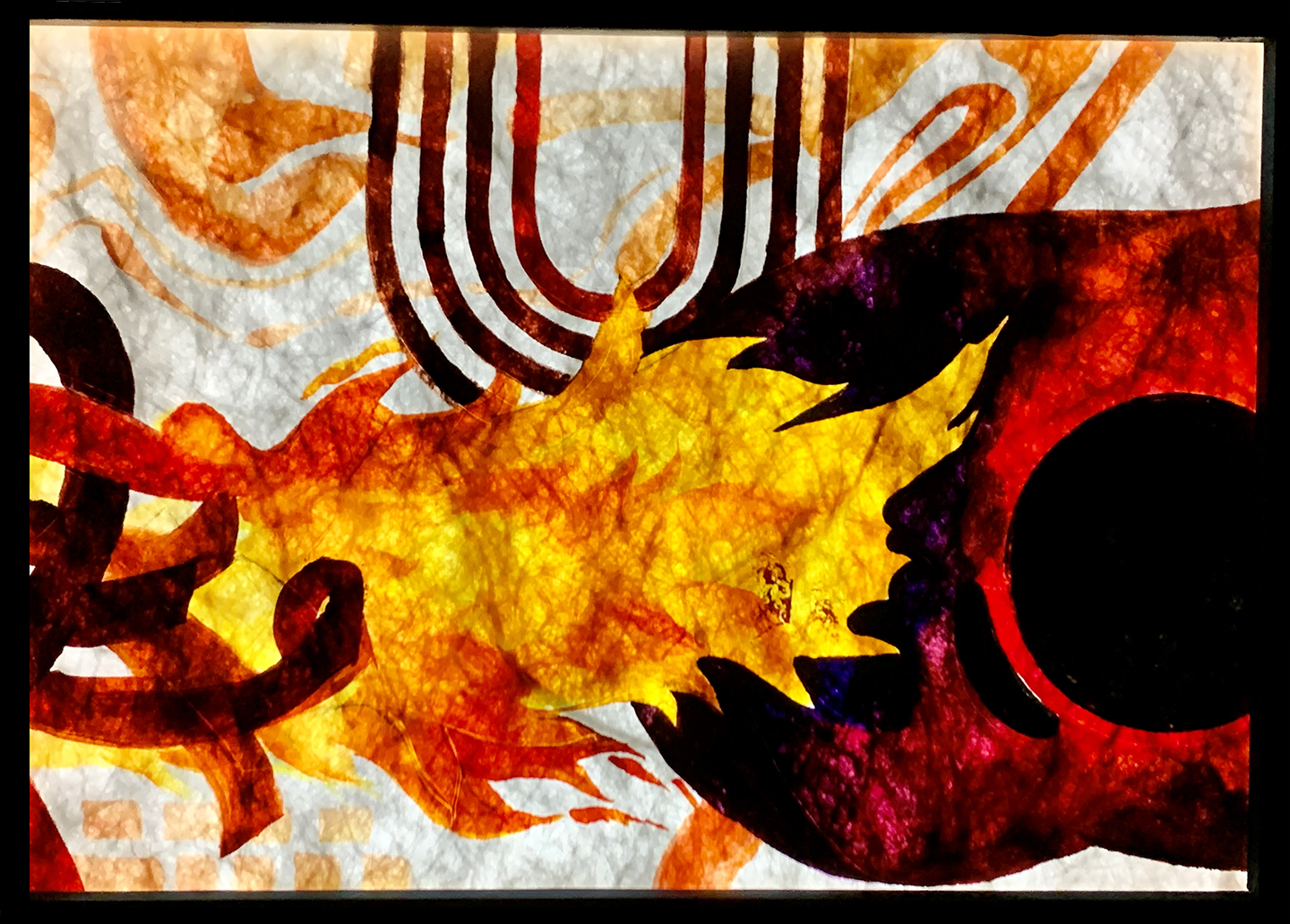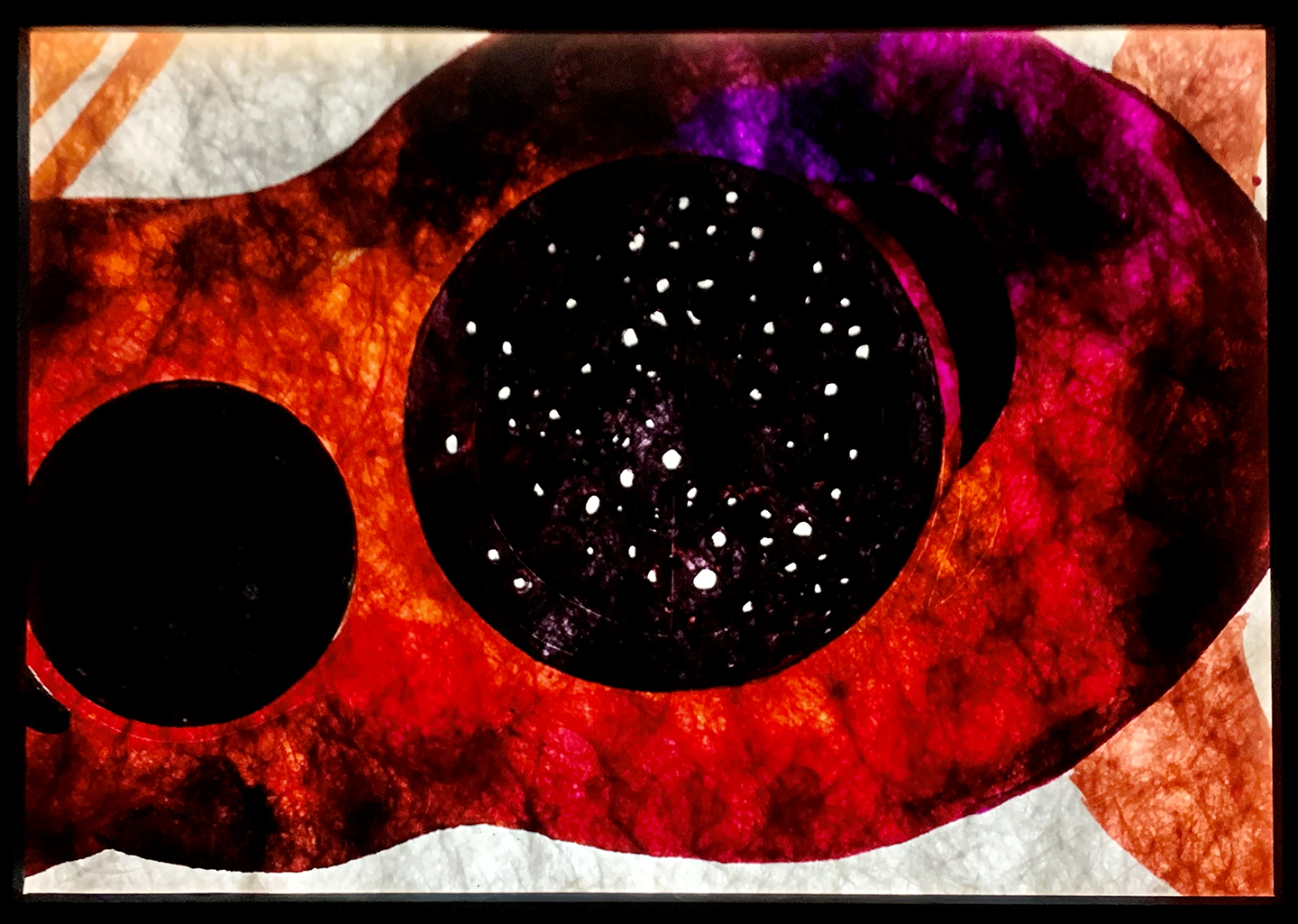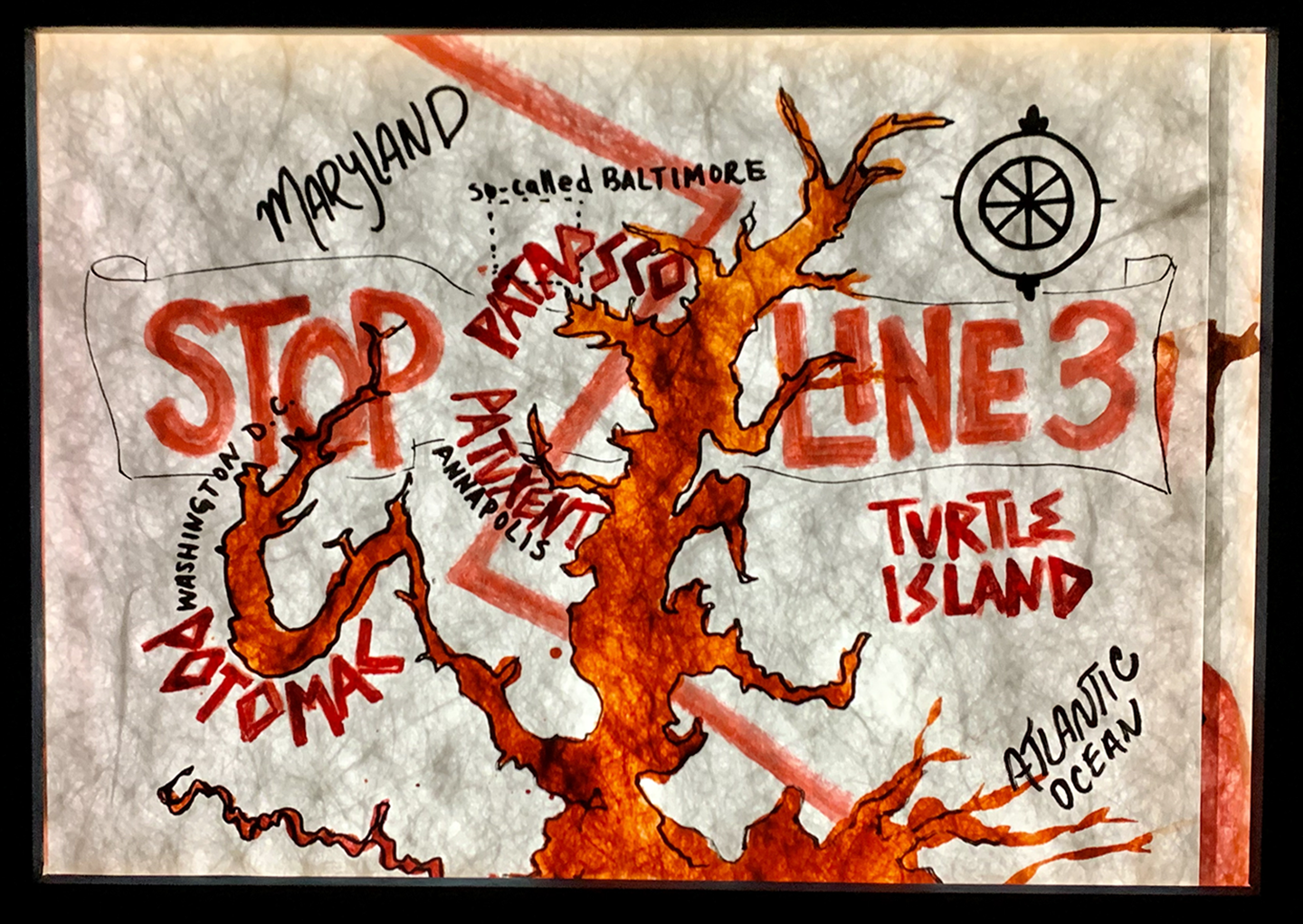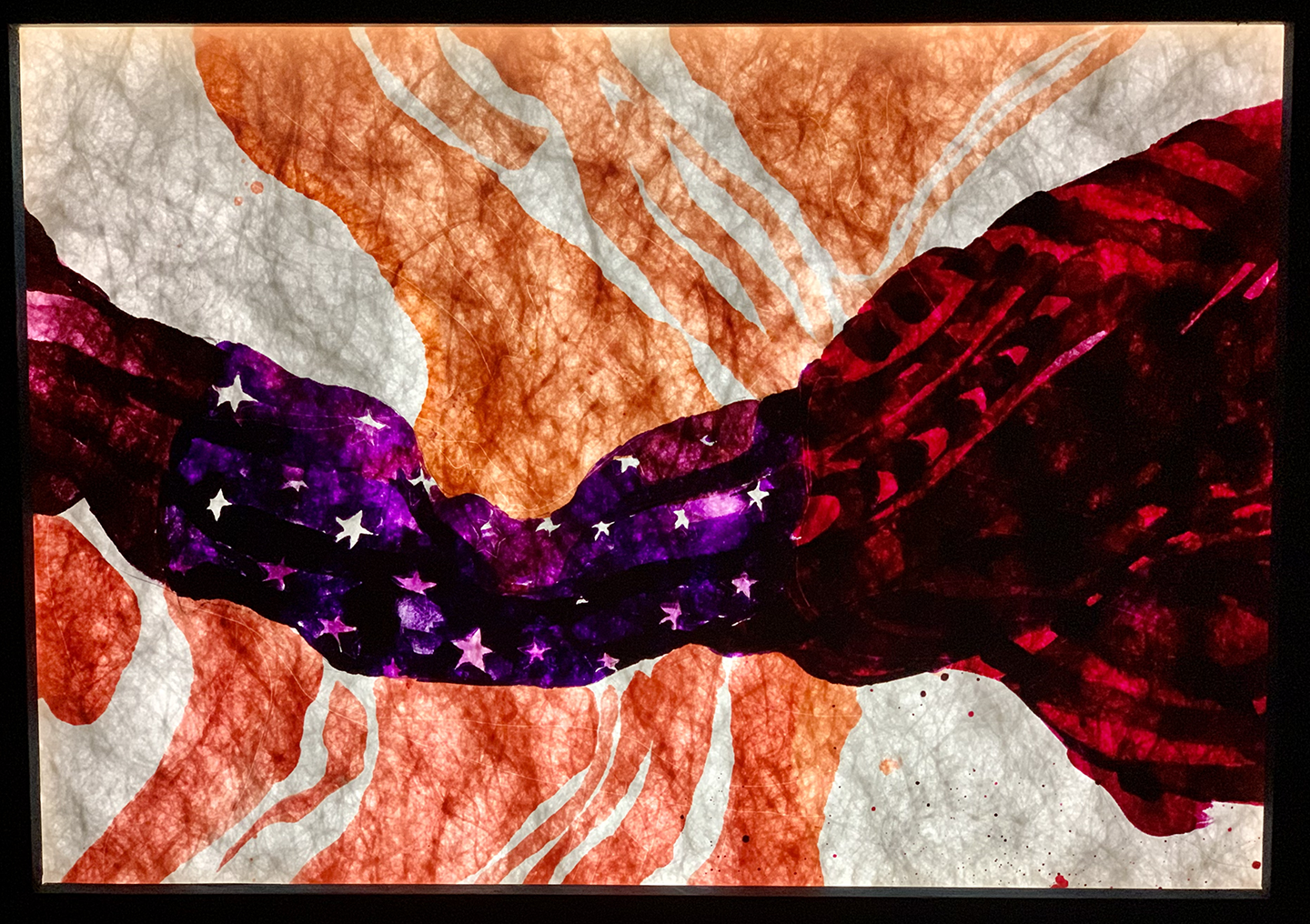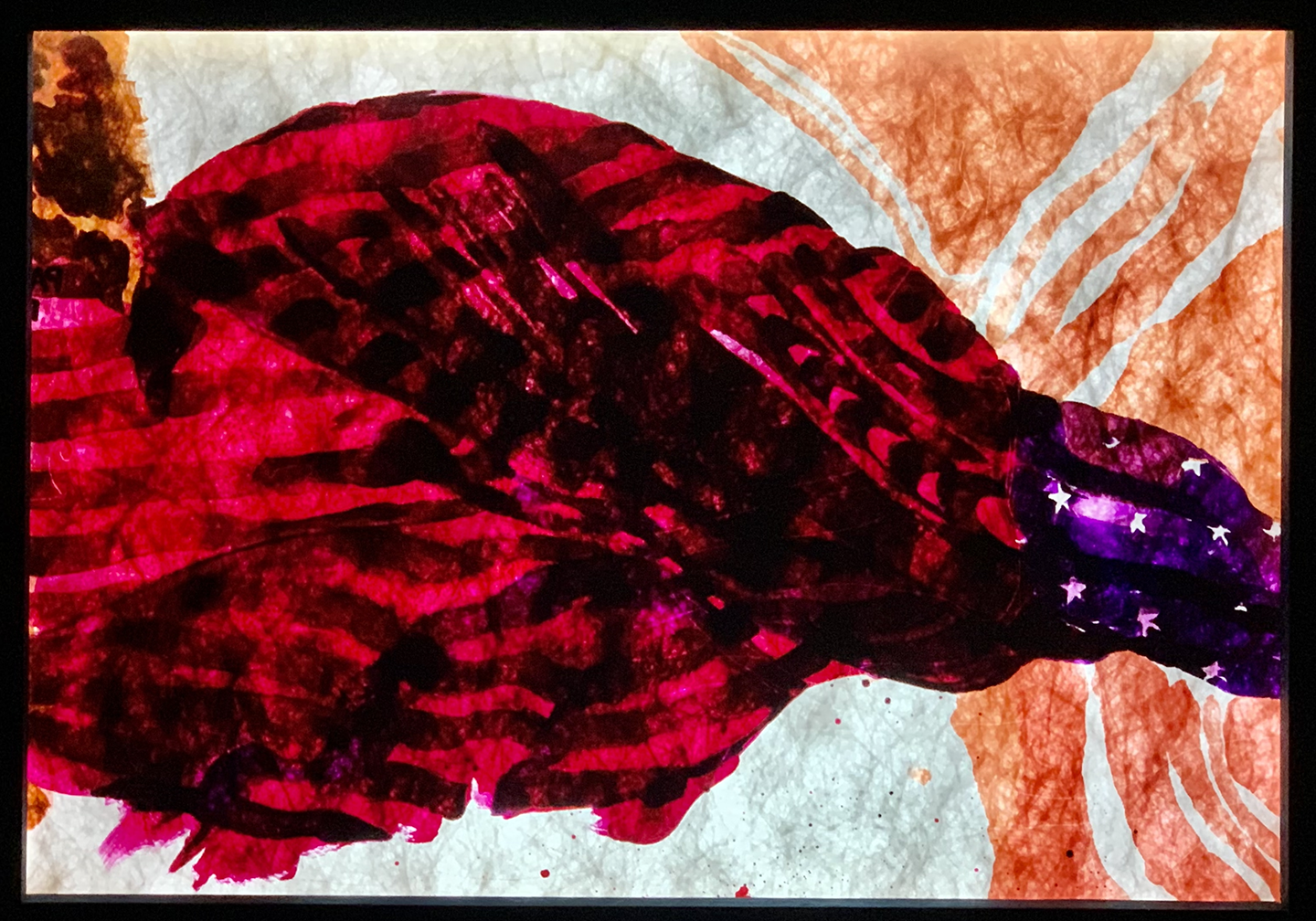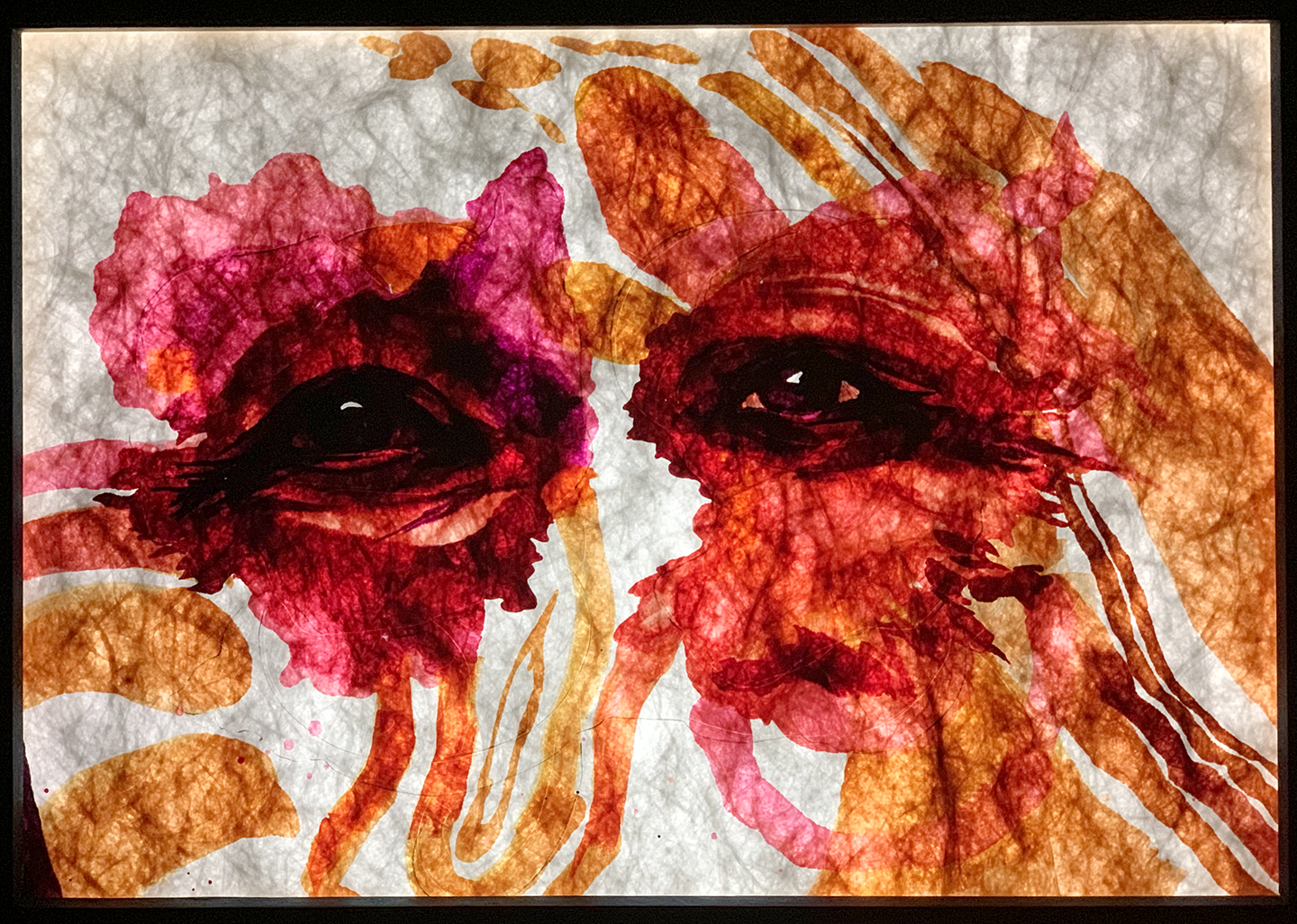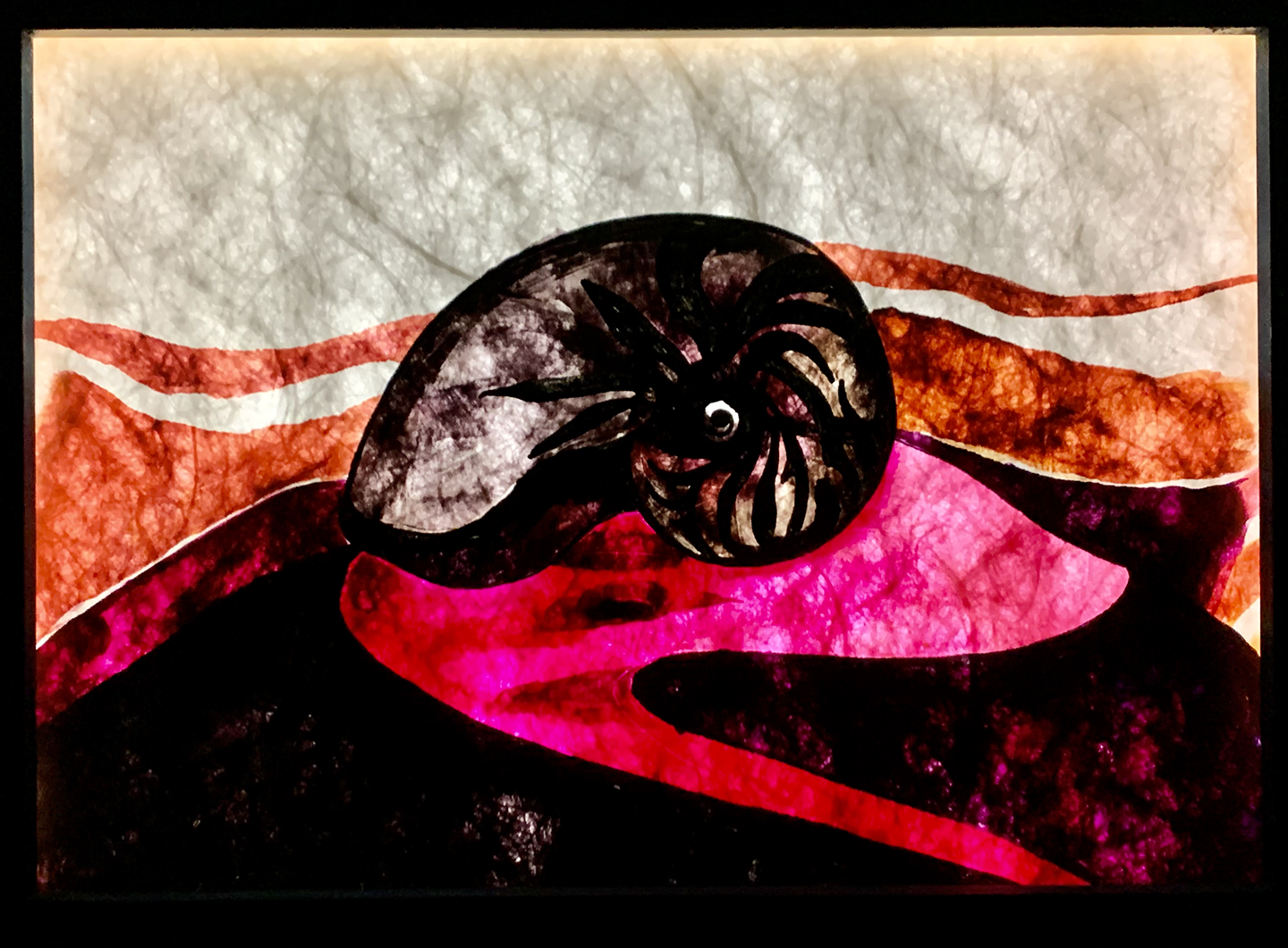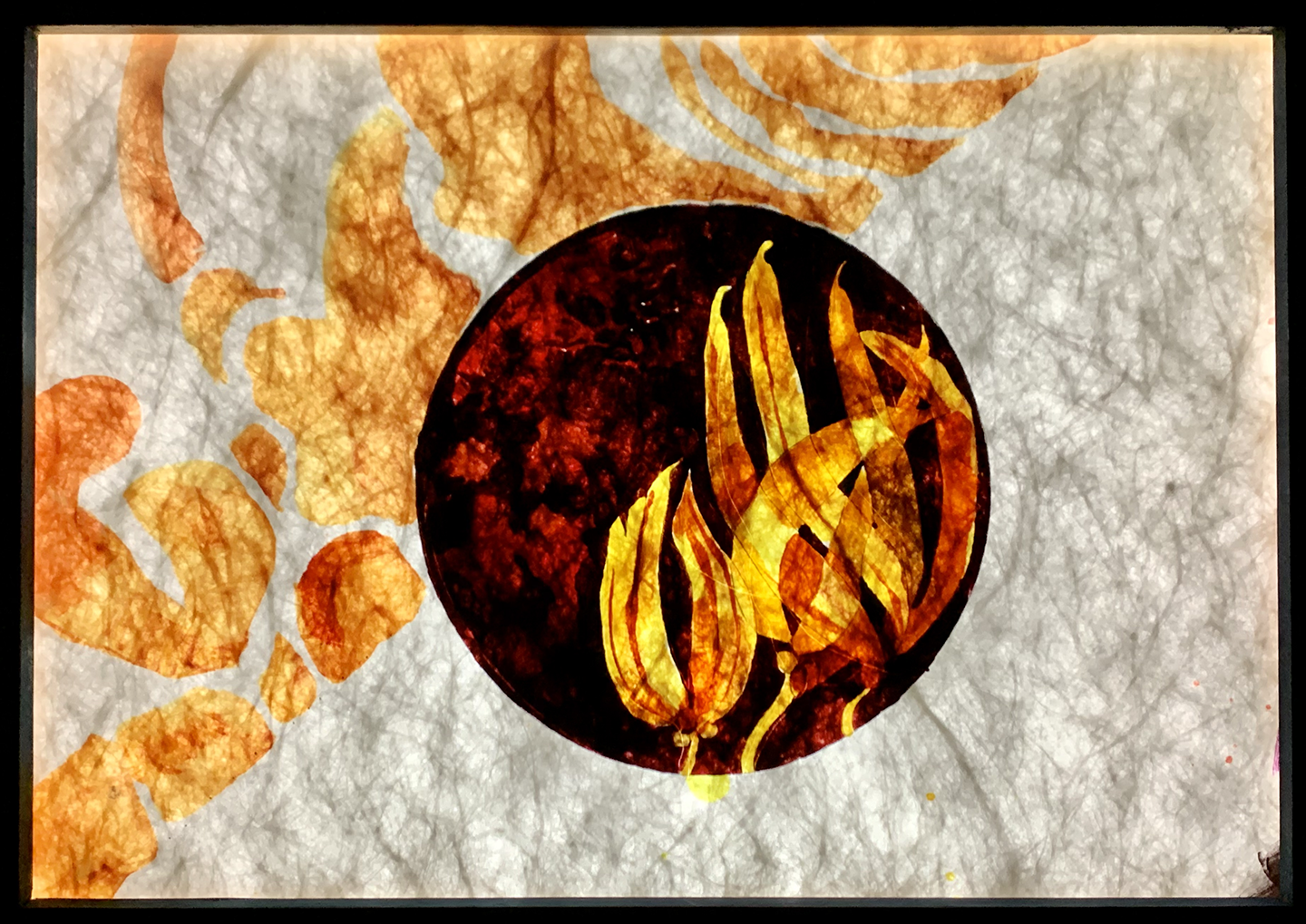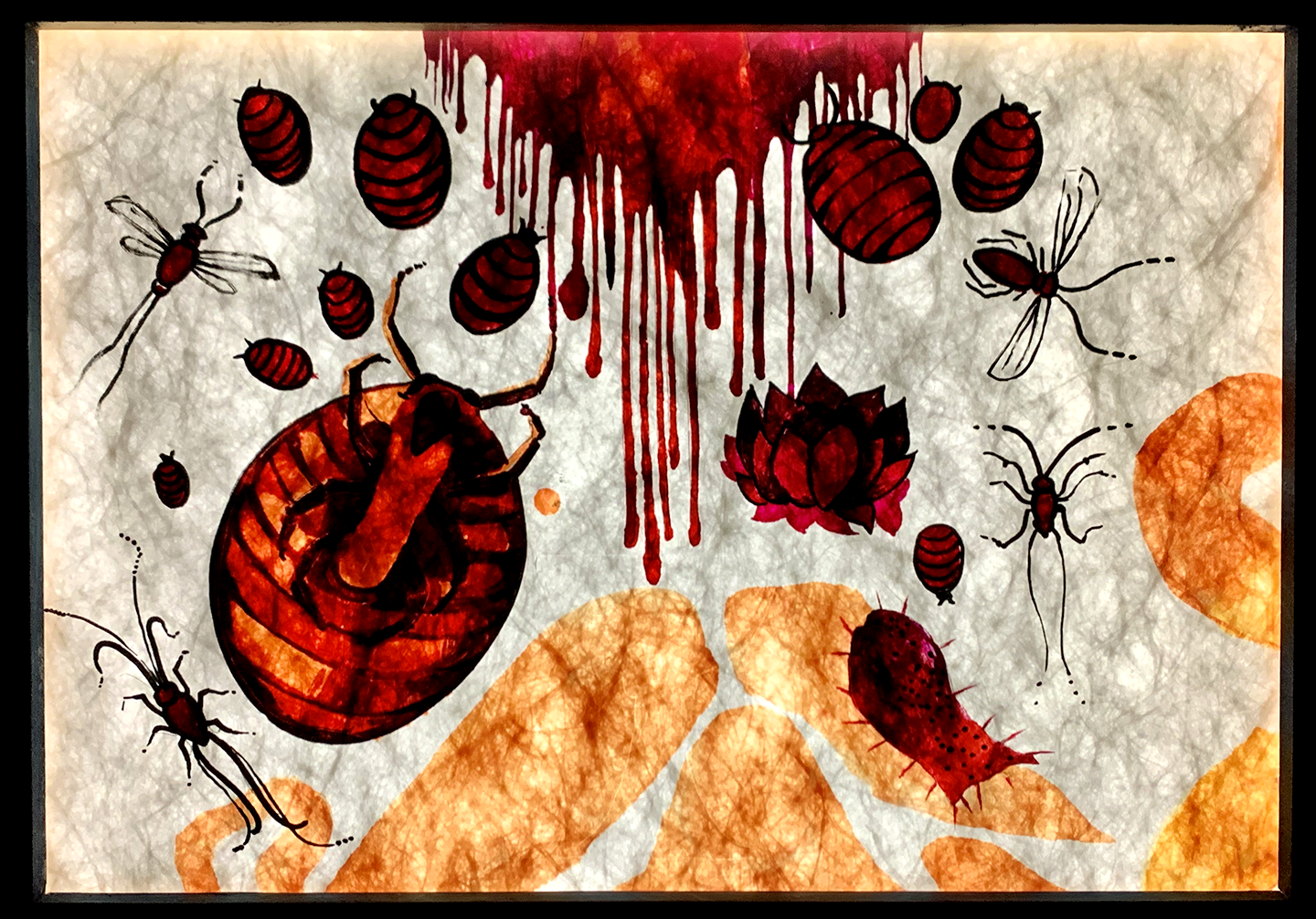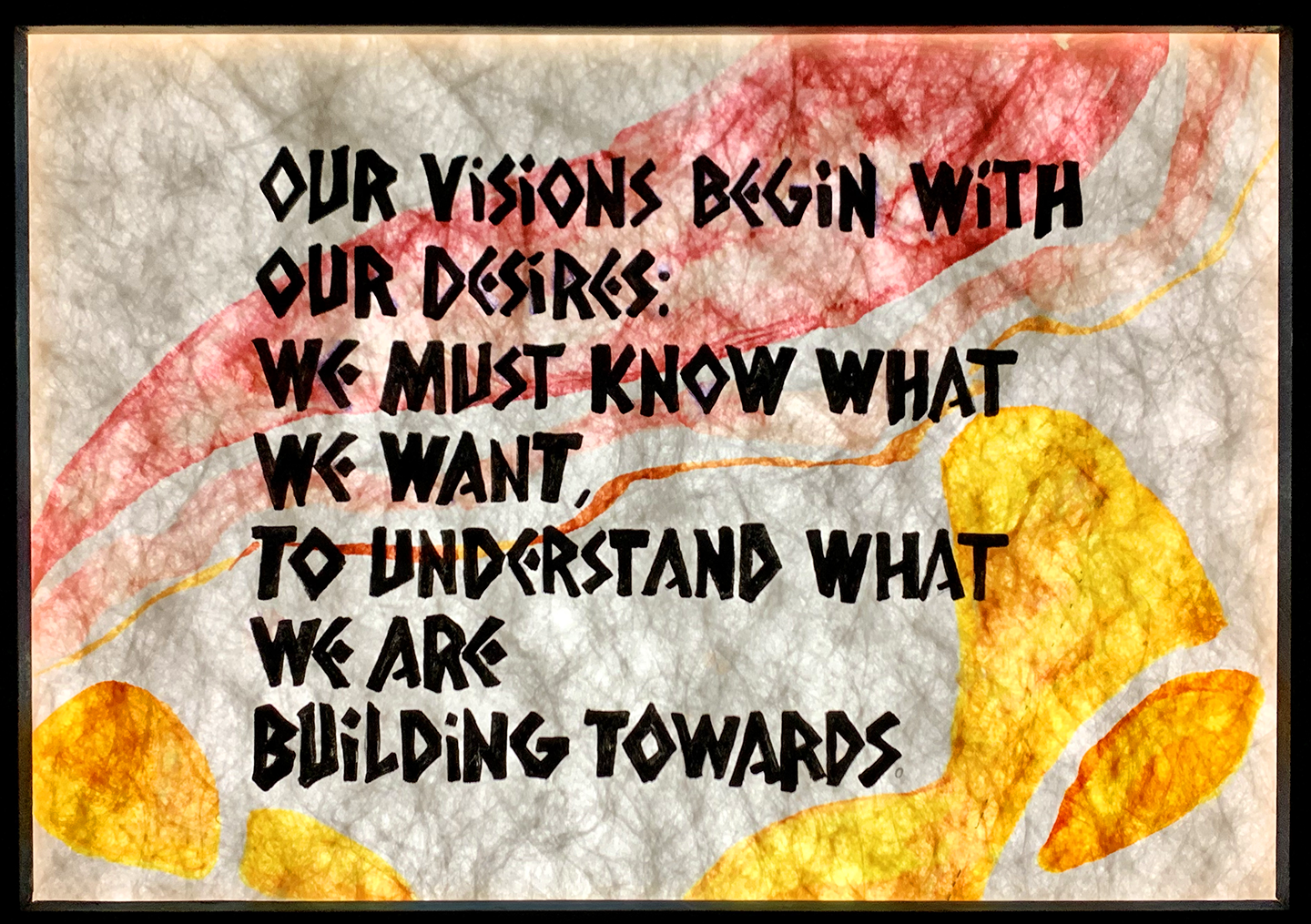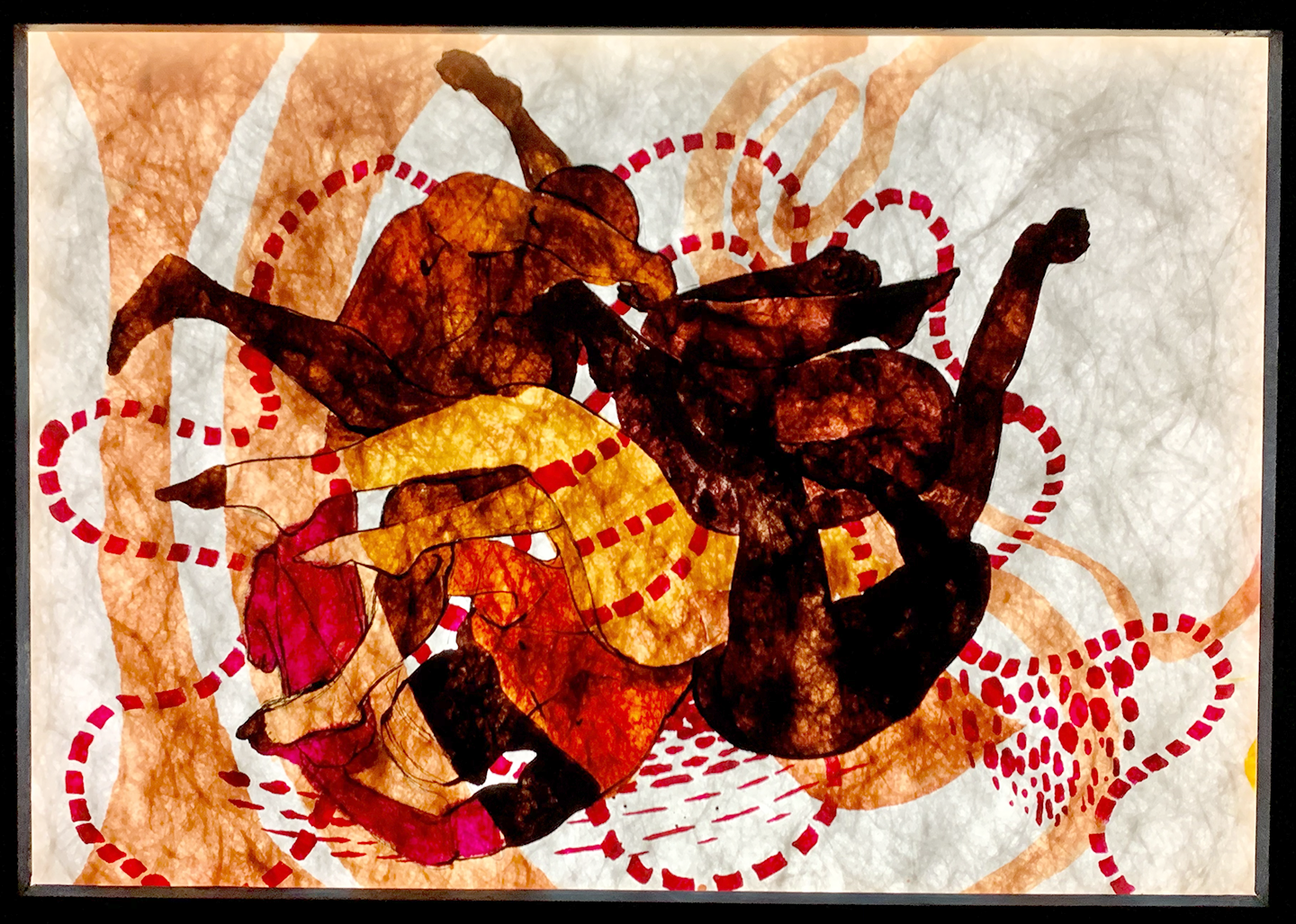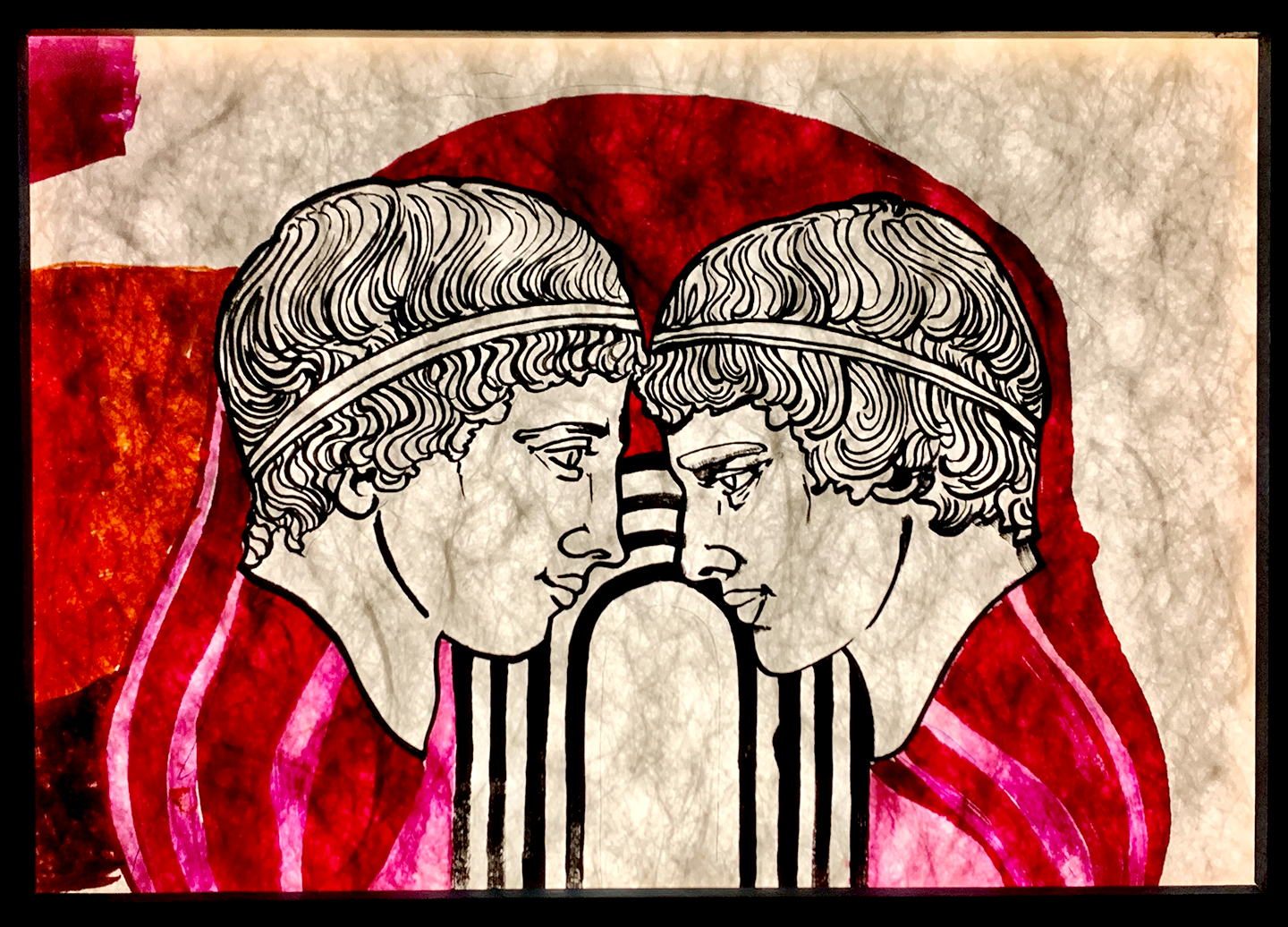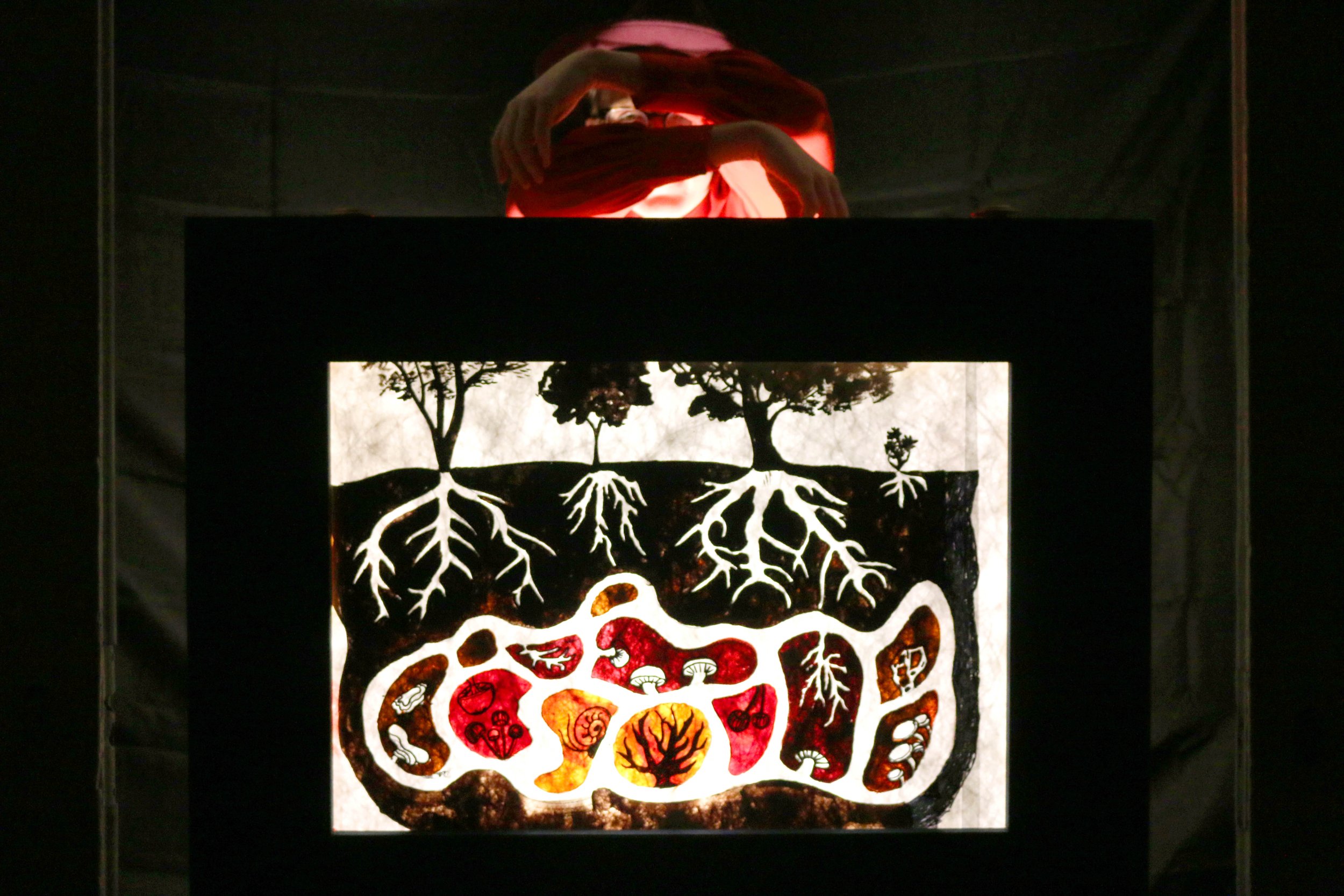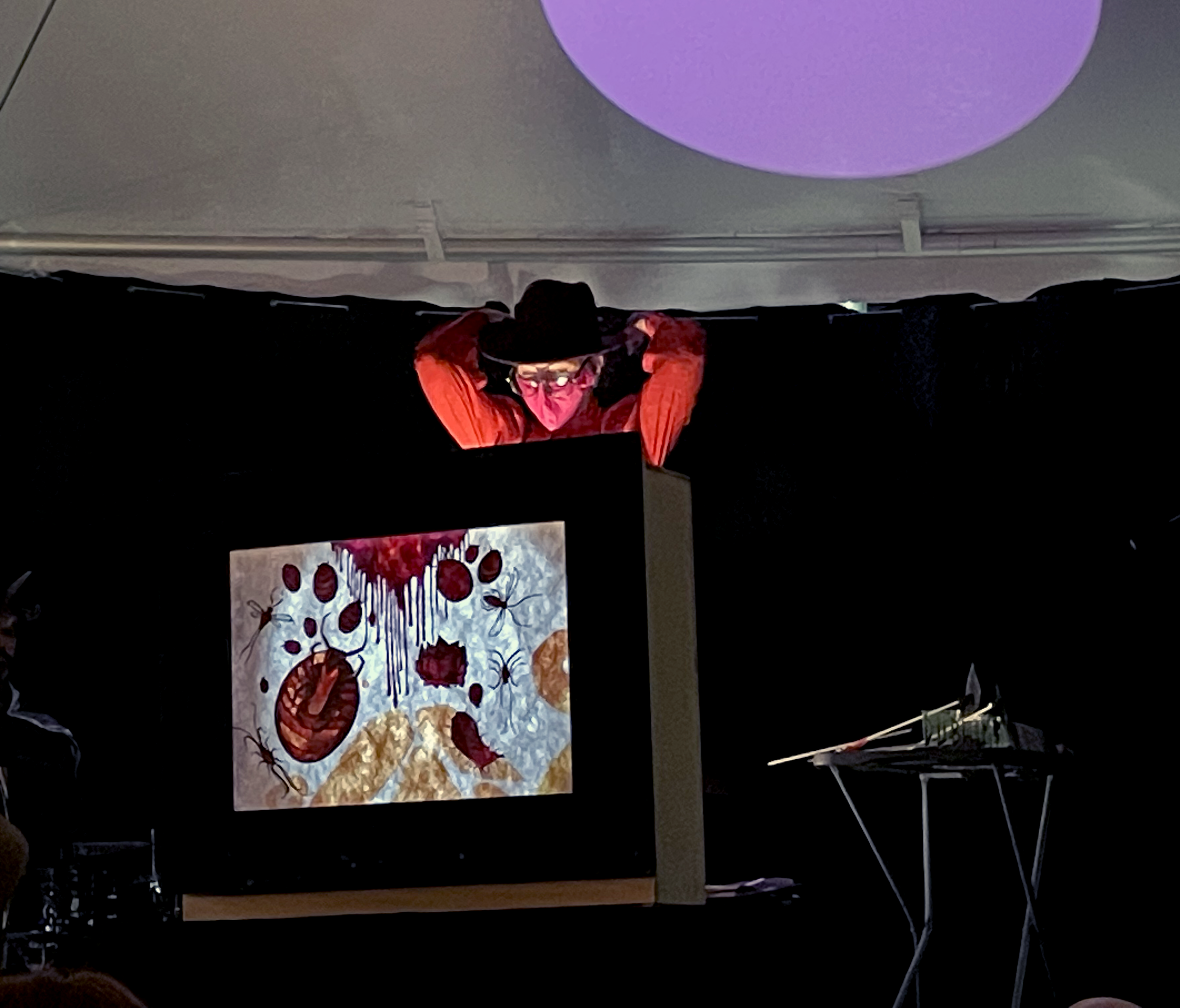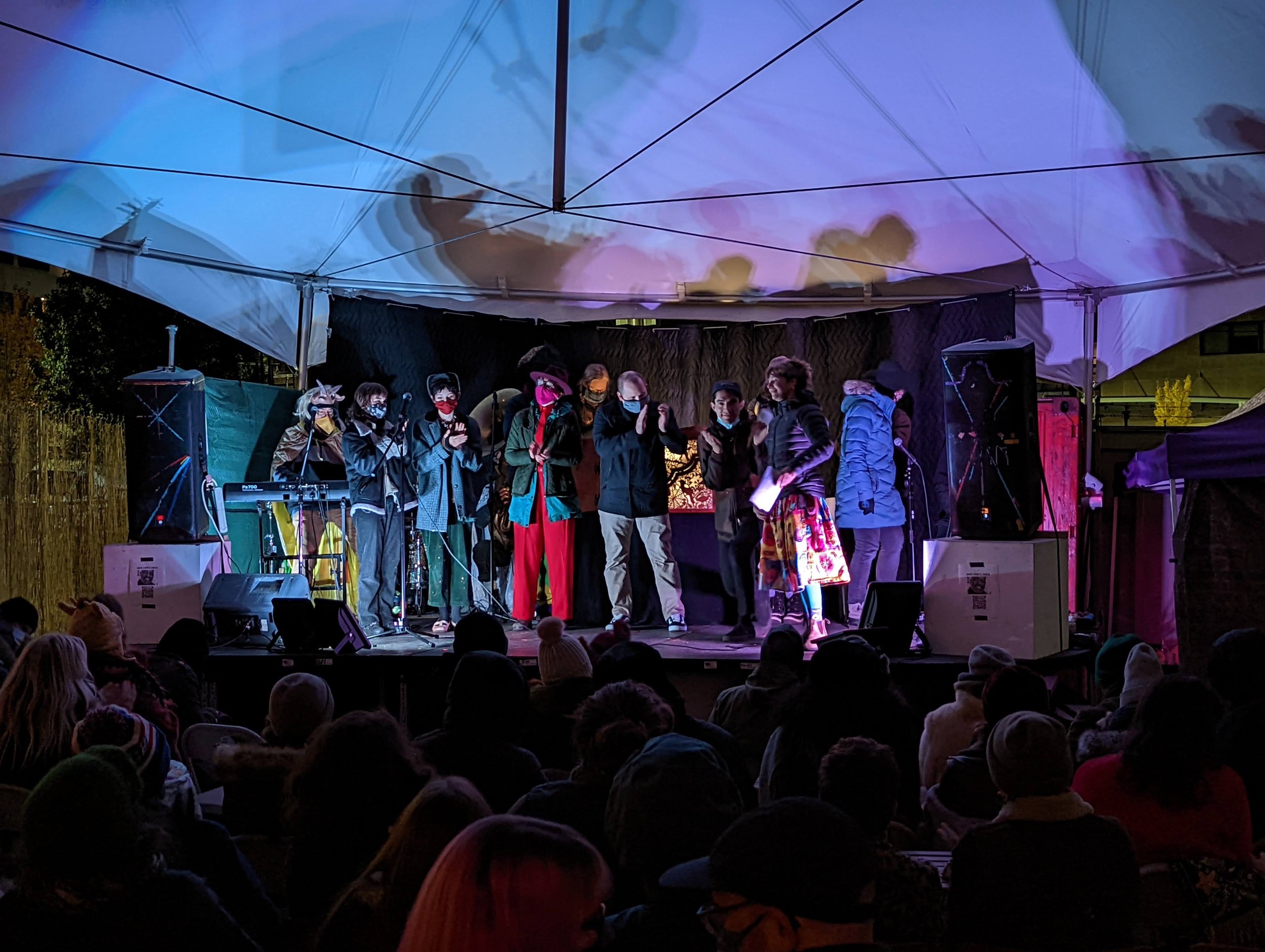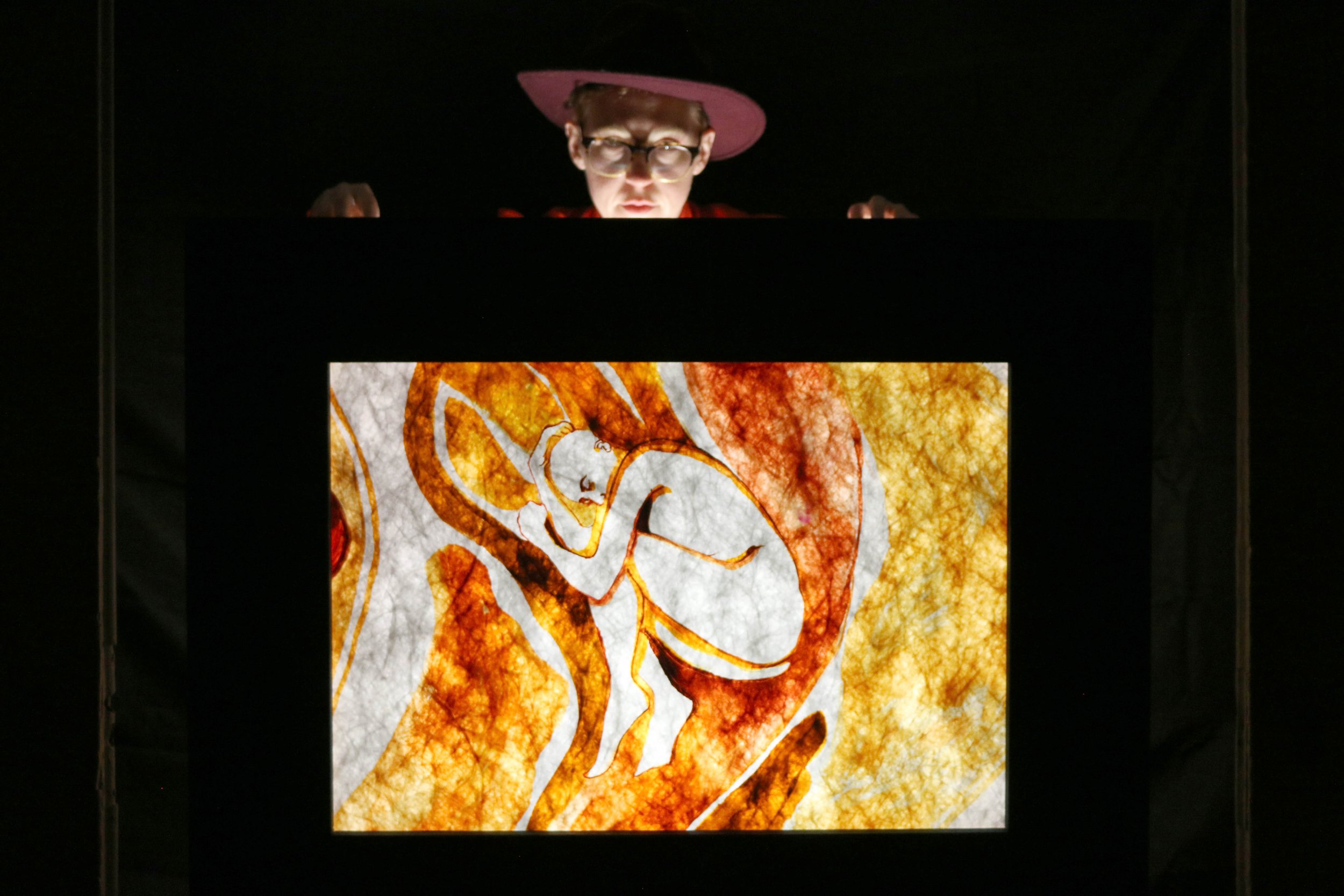Ruminations on Red Geographies
Background:
A Crankie is one word for a long, visual scroll that is physically cranked by the performer to tell a story, often accompanied by a song, script, or folk-tale. Versions of illustrated scrolls that use shadow puppetry exist in many other parts of the world, with a long history in Southeast Asia, and a traditional practice in Indonesia, called Wayang Kulit, to illustrate spiritual mythology. Artists in Bali continue to use this medium to tell contemporary stories to rural communities.
I am calling on inspiration from crankies told in the late 1800's when new Europoean immigrants coming to so-called America created them to tell stories about their home country and perform them in churches, town festivals, and ceremonies, often along with folk songs. They are also used as a form of street theater, seen in South America and the United States by political action arts groups like the Bread & Puppet Theater based in Vermont.
More Details:
For this work, "Ruminations on Red Geographies," I was invited by the Baltimore artist Rae Red to create artwork in response to the color red for a devised, collective piece titled "Red is Real". I originally intended to perfrom this piece as part of the larger performance, but due to the pandemic, our performance dates were cancelled. After writing this piece in 2020, I was able to perform it at Current Space's outdoor stage, hosted by the Black Cherry Puppet Theater in Fall 2022.
At the time I was brainstorming ideas for this crankie, I was reading Mapping Desire: Geographies of Sexualities by David Bell, and wrote a 12-minute spoken word poem in response to that text, incorporating my own observations on the color red in my environment, and Euro-centric societal associations with red. The crankie script also weaves in reflections on my identity and family history, and pairs with a recorded soundscape from my surroundings.
This piece was first performed at the Black Cherry Puppet Theater, but is designed to travel and spark dialogue with different communi-ties about the variety of ways red carries different associations in different cultures and impacts our experience in public space.
Detail from crankie
Excerpt from Crankie Script
Chromophobia: The persistent, irrational fear of color; an obsession with the absence of color-white-as the sublime ideal. But this absence only holds true for subtractive color. Additive color, like light, only achieves a pure white, with true green, true blue, and true red. (choreography: falling) The color red is a fall from grace into a world of consciousness and self-made. Like when aaron betsky claims queer (white) space finds the dark alley place where it can construct an artificial architecture of the self, a series of aroused networks charting our deepest desires, Audre Lorde responds: Our visions begin with our desires: we must know what we want, to understand what we are building towards. I want more than an alley but less than a hoard.
Red is a wrench for that building, tightening and loosening our understandings, stretching us to polar geographies, (choreography: stretching out) asking us to duo-dwell in overlapping circles: a venn diagram of prideful victories and shameful secrets, places defined by love and war, revolutionaries calling for anarchy and patriots sacrificing life for country, a closeness to godliness, (choreography: praying), glorious queer bodies resisting the fragmentation of lives and landscape, searching for a place to call home.
The European Renaissance summoned cardinals wearing regal red gowns downing the sacrifice of 70,000 crushed cochineals for one pound-of dye, and the slaughter of the Aztecs, whose dying traditions they stole along with their existence.
My first taste of christ occurs waiting in line for pastor martin to place his body in my mouth, the queasy anticipation of wrinkled soft finger tips brushed corner lips, landing where fifty tongues had just licked, the slip of the bronze edge. Lines of white-lace stuffed children wait to accept the eucharist and confess of their sins: knotted red fester of course hair, blood clotted kelp, pink scarred rip-tides, gleaming wet shells like salt-dripped wells of sweat, belly buttonned - pockmarked rock, your peach clam shell perched atop my white sand dune, red cheeks whipped smart, crusted algea legs swaying with the current, gasping for air, almost completely underwater. (choreography, underwater - looking up, breathing/gasping)
This body. (choreography: going limp) Losing color as we age like the lost coral we screamed about last night, as our public treasures disappear so too do our souls. My raw red eyelids are low-hanging rain clouds, the furrowed looks and lines between my creeping brows dig deeper, and yet - I hear conflicting lyrics: It takes a red headed woman to get a dirty job done goes the bruce springsteen song. Fragile fair skin, don’t go outdoors, the open sun sky will only bring you sores, Where is my pride?
In Irish my last name means “black” - dubh - duibhir - dyer - dwyer - a child of a cloth dying family. In America the English word for irish is white. Our claim to the Irish name remembered through slurred syllables also claimed solidarity with the north fighting police brutality while forgetting cries of those who lay on the other side of those red lines. Red haired families fleeing persecution, running toward the promise of peace and assimilation. Where is my pride?
“We Americans claim to be a peace-loving people. We hate bloodshed; we are opposed to violence. Yet our hearts swell with pride at the thought that America is becoming the most powerful nation on earth, and that she will eventually plant her iron foot on the necks of all other nations. Such is the logic of patriotism... a superstition artificially created and maintained through a network of lies and falsehoods” - Emma Goldman. Where is my pride?
Is it found in the annals of anarchists who were thrown in jail for demanding the right to free their bodies and minds, later accused of red spies, thousands of immigrants deported for simply resembling “radicals”, hunted far and wide-free speech be damned-twenty eight states banned displaying red flags in 1920. Hoover labeled Dr. King a communist like the FBI calls Patrice Cullors a terrorist. The only flag this country could stand to fly has 13 red stripes for hardiness and valor, blue for vigilance and white for innocence. Where is my pride?
Is it found in the echoes of sports stadiums as my family cheer on their favorite red football team, , ignoring an on-going war on native ppl fighting for clean - water, still protecting ancestral land, still organizing to stop recognizing a holiday that celebrates genocide by one man, federal recognition a clear omission in this country’s mission to steal and demand with divine authority, everything at hand. How can we claim to never change a false name when our rivers and streets and landmarks preserve a native tongue, rooting us in a history that runs deep in America’s blood.
But names are not the only thing in the landscape that tell a story. Fear has created a whole style of architecture in urban design, where to be a pedestrian is to be under suspicion marks Rebecca Solnit.(Choreography-scared, protected pose) Think no tresspass signs, traffic lights, stop signs, boundary lines, warning signs, danger zones on map phones. Red tape that secures tall gates around riches like ditches, our moats for flooding gentrification, while coastal heatwaves sprawl fire across our paved polluted psychic, our histories of shame, aflame. We still have gaping red wounds to heal, I want reparations, not just reconciliation. We are recycling red scars in the landscape, a fissure into our future that beckons to be useful.
Still from crankie
Is it found in the wisdom of our elders? “When we drop fear, we can draw nearer to people, we can draw nearer to the earth, we can draw nearer to all the heavenly creatures that surround us. Bell Hooks. Red as love: Our built environment controls our movements, our social exchange, our relationships, our desires, cities planned in right relation to the land are in right relation to our hearts. Are in right relationship to our bodies:
Like the red chakra of the base of the spine, used to heal in a time of crisis: steady, balanced, belong, nurture, sustain- these are the shades of red I want to world-build with. What would it look like if planners used principles like abundance, compassion, fluidity, and emotional healing to chart our maps? I hear the word connectivity often, referring to the routes our built environment allows for pathways to get from point A to point B, but I wonder- what would connectivity mean if we meant it as a means of fostering relationships of transformation through trust-building, like the ancient sign of welcome in a red door applied on every foundation, signifying come inside, you are safe here.
We will lap up your tensions, swallowed deep in our pit, where they’ll digest slowly to stay with it. Rest and seed your woes, I will devour your faults whole and wait for them to grow in the space of forgiveness, weaving our traumas together like kneading layers in the earth’s crust- Rebirth them as a familiar stranger we know how to hold. A part of our family. Our children of many. Free to frolick in public space, not just alleys. The straightness of our streets is an artifact, not a natural fact. Where is my pride?
The nuclear family is dissolving. We are the makers of each other- we could learn collectively to act like it. In this world building, cities are designed to hold -not cage- bodies, designed to heal - not herd- bodies, and we are held in many, many different ways. In a western, colonized world, where even the simple act of walking in the public realm holds a European white, male helm, what has a history of difference and healing resisted? Space is a pressing matter, and it matters which bodies press against it...
I’m at The Castro for the first time:(choreography: looking up, searching slowly) The first red I see is the looming bank of america sign wrapped around three sides of corner history we’ll never get right. If the gay agenda settles into hillside homes, maybe truly public queer space must “remain ephemeral— uncovered and recovered by years of renovations, lingering only in the memorial.”
Kimberly Crenshow states: Intersectionality means being able to attend to not just unfair exclusion but also unearned inclusion. We must observe the ways our pride reproduces injustice, then take action: see red. (choreography: action stance, red light) Our shades of red are embedded in this cross section, start at the palest pink to the deepest burgundy, floating somewhere between self and society, villain and victim, the body and spirit, man and woman, conflict and truce, lover and friend, this life and its end. Shades of red entwined: neither, both, other, us, as we are in our differences. As we are in our own mess making, searching further distances for the white clear light of knowing, dripping red drops of wondering along the way.



